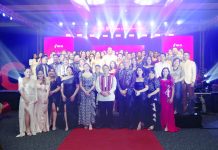
WHEN huge hearts join forces, people move forward!
NEARSOL recently joined forces with The Rotary Club of Iloilo for Hatag Buhay, an outreach project for persons with disabilities in Iloilo City.
The activity held on Sept. 21 at the Iloilo Freedom Grandstand featured the giving away of food packs to our brothers and sisters with disabilities.
Headed by NEARSOL’s senior operations manager, Luis Ortiz, this outreach project with the Federation of Persons with Disability Associations in Iloilo City was a huge success.
NEARSOL commends The Rotary Club of Iloilo, its sponsors, and its NEARSOL team members for choosing this oft-neglected cause and for turning this project into a reality!
NEARSOL welcomes everyone.
There’s a huge pool of talent and individuals with amazing skillsets that remain untapped – only because many are labeled as “disabled”.
The World Program of Action states that: (https://www.independentliving.org/docs5/RoleofOrgDisPeople.html)
“More than 500 million people in the world are disabled as a consequence of mental, physical, or sensory impairment. These persons are entitled to the same rights as all other human beings and equal opportunities. Too often, their lives are handicapped by physical and social barriers in society, which hamper their full participation. Because of this, millions of children and adults in all parts of the world often face a life that is segregated and debased.” (WPA, p. 1)
It is estimated that one person out of ten is disabled by physical or mental or sensory impairment, and at least 25 percent of any population is adversely affected by disability. At least 350 million disabled persons are living in areas where they do not receive the services needed to enable them to overcome their limitations. (WPA, p 11)
Disabled people in the developing world often face more acute barriers than those in developed nations. Up to 80 percent of disabled persons live in isolated rural areas in the developing world. In some countries, 20 percent of the population is disabled. Thus, it can be estimated that, when disabled people’s relatives are included, 50 percent of the population is affected by disability. In addition, disabled people are the poorest of the poor. They often do not have access to adequate medical services. As a result, disabilities are often not detected in time to minimize disability affects. By the time they receive medical attention, if at all, impairment may have become irreversible. (WPA, pp. 13-14)
In addition, the number of elderly people is rising around the world. Thus, disabling conditions that are not common to younger people, such as strokes, heart disease, and deteriorating vision or hearing, are becoming more prevalent. (WPA, p. 14)
At NEARSOL, we like using the term “differently-abled”. It’s because we focus on abilities and what you can do, NOT what you can’t. It’s important to remember that disabilities (visible or invisible to the eye) are different and that whatever challenges you face shouldn’t be a hindrance to living a happy and productive life./PN



